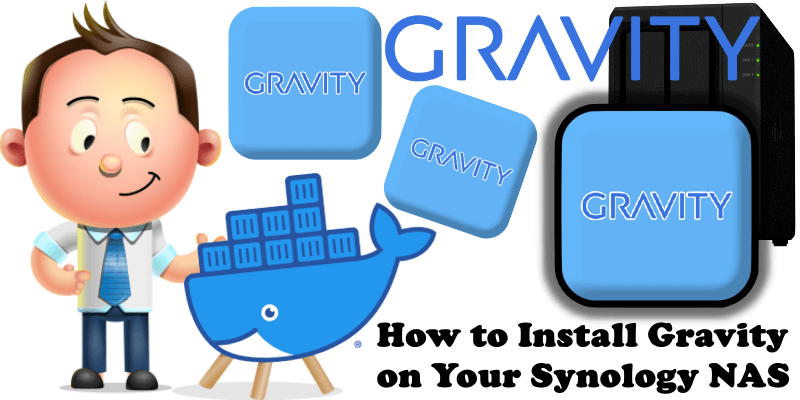
Gravity offers DNS with Ad-blocking, DHCP with automatic DNS integration, and network discovery. Built on the same code as CoreDNS and Blocky, the code is battle-tested. Additionally, Gravity’s data is fully replicated, allowing you to have a simple multi-site setup without needing to manage external databases, or worry about primary-secondary setups. DNS with built-in caching and ad/privacy blocking. The cache is replicated across all instances in a cluster, further increasing its effectiveness. Migration is also made very easy as Gravity can be set up as forwarder to forward requests to an existing DNS server, while also adding the records to its own database. In this step by step guide I will show you how to install Gravity on your Synology NAS using Docker & Portainer.
STEP 1
Please Support My work by Making a Donation.
STEP 2
Install Portainer using my step by step guide. If you already have Portainer installed on your Synology NAS, skip this STEP. Attention: Make sure you have installed the latest Portainer version.
STEP 3
Go to File Station and open the docker folder. Inside the docker folder, create one new folder and name it gravity. Follow the instructions in the image below.
Note: Be careful to enter only lowercase, not uppercase letters.

STEP 4
Log into Portainer using your username and password. On the left sidebar in Portainer, click on Stacks then + Add stack. Follow the instructions in the image below.

STEP 5
In the Name field type in gravity. Follow the instructions in the image below.
version: '3.9'
services:
gravity:
hostname: gravity1
container_name: Gravity
image: ghcr.io/beryju/gravity:stable
restart: on-failure:5
network_mode: host
user: 1026:100
volumes:
- /volume1/docker/gravity:/data:rw
logging:
driver: json-file
options:
max-size: "15m"
max-file: "5"
volumes:
data:
driver: local
Note: Before you paste the code above in the Web editor area below, change the value numbers for UID and GID with your own values. (Follow my step by step guide on how to do this.) 1026 is my personal UID value and 100 is my personal GID value. You have to type in your own values.
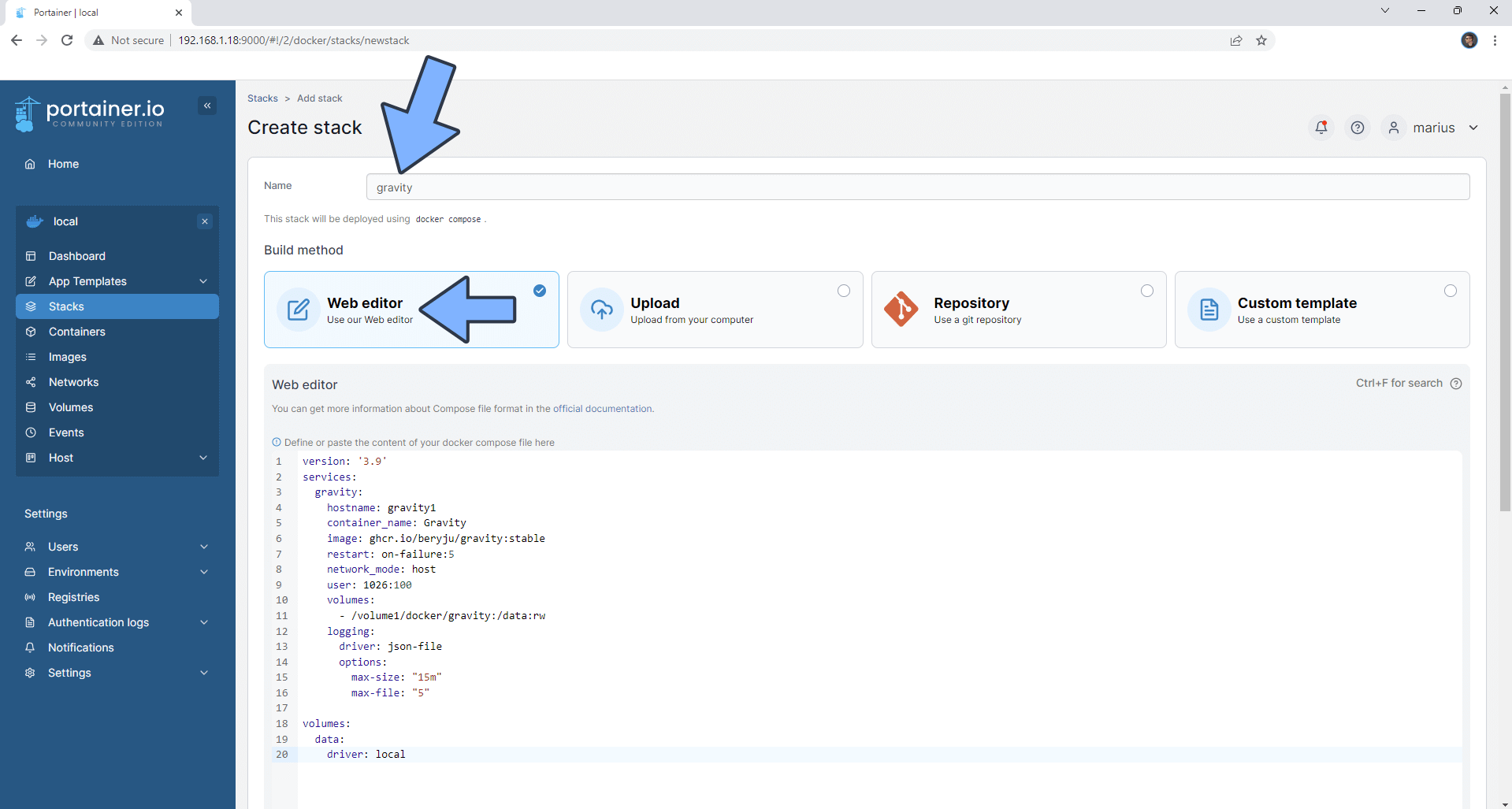
STEP 6
Scroll down the page until you see a button called Deploy the stack. Click on it. Follow the instructions in the image below. The installation process can take up to a few minutes. It will depend on your Internet speed connection.
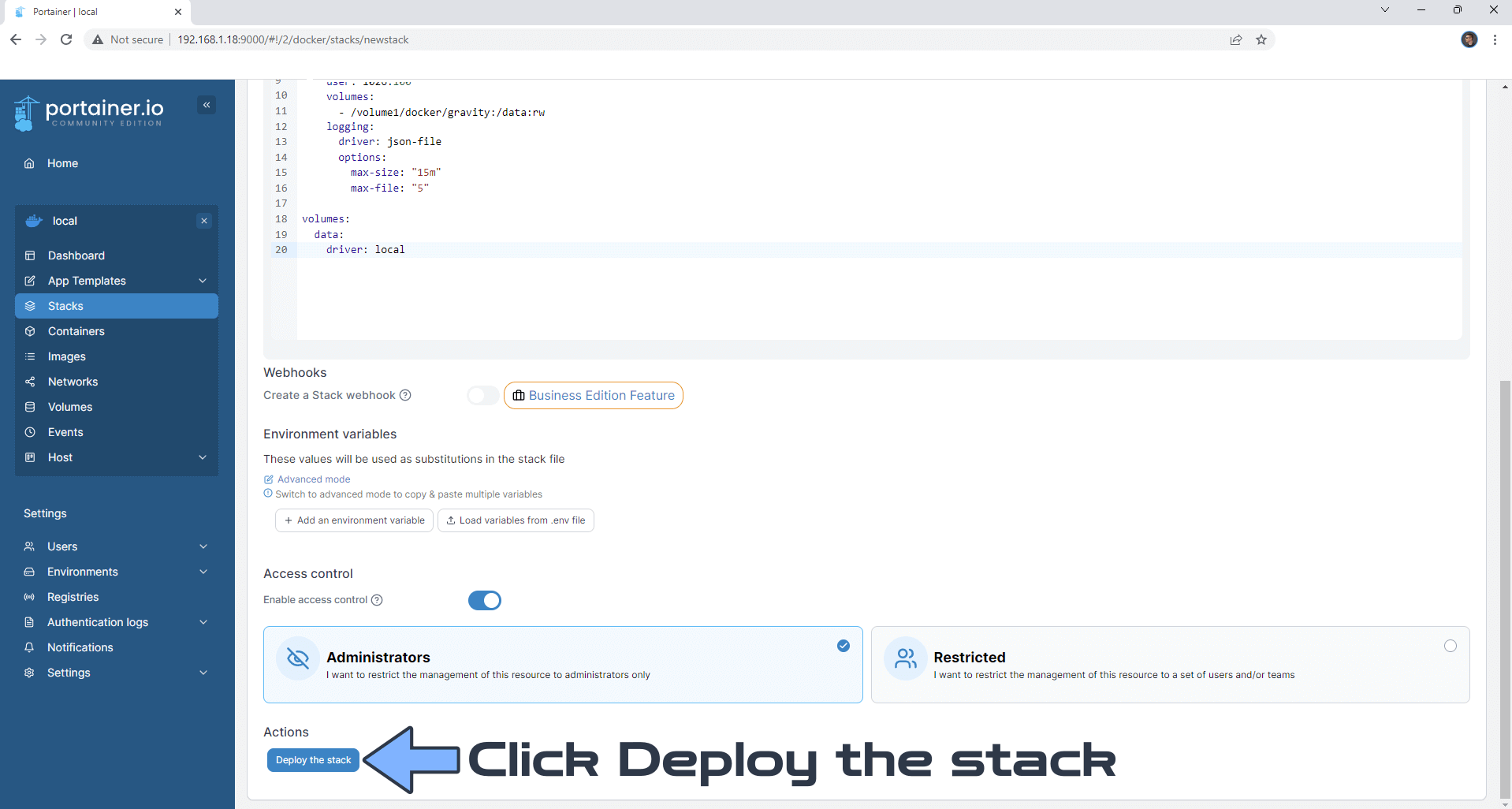
STEP 7
If everything goes right, you will see this message at the top right of your screen: “Success Stack successfully deployed“.
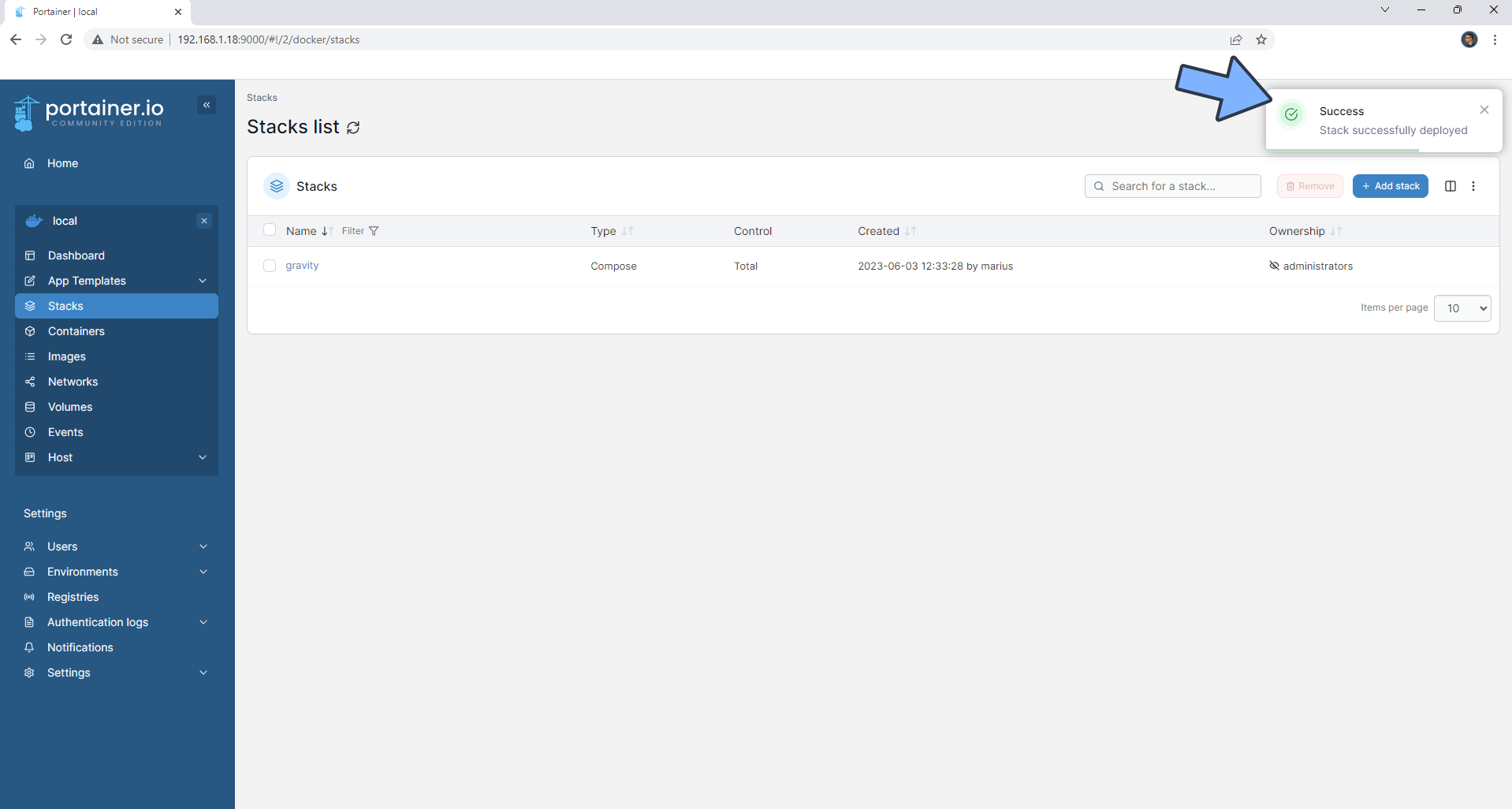
STEP 8
On the left sidebar in Portainer, click Containers. Identify your Gravity instance, then click on the little log icon. Follow the instructions in the image below.
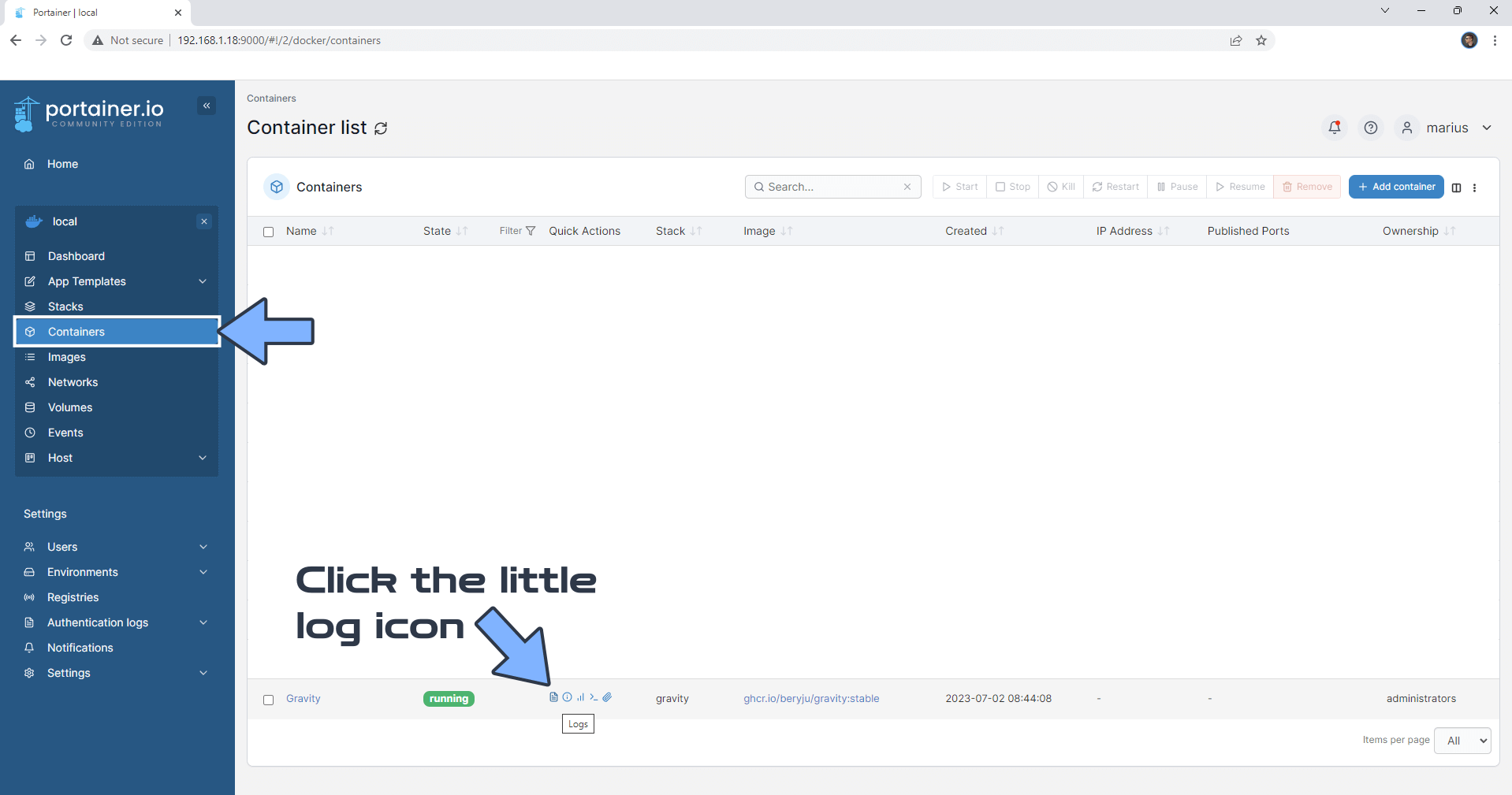
STEP 9
Copy your auto-generated password. You will need it later at STEP 11. Follow the instructions in the image below.
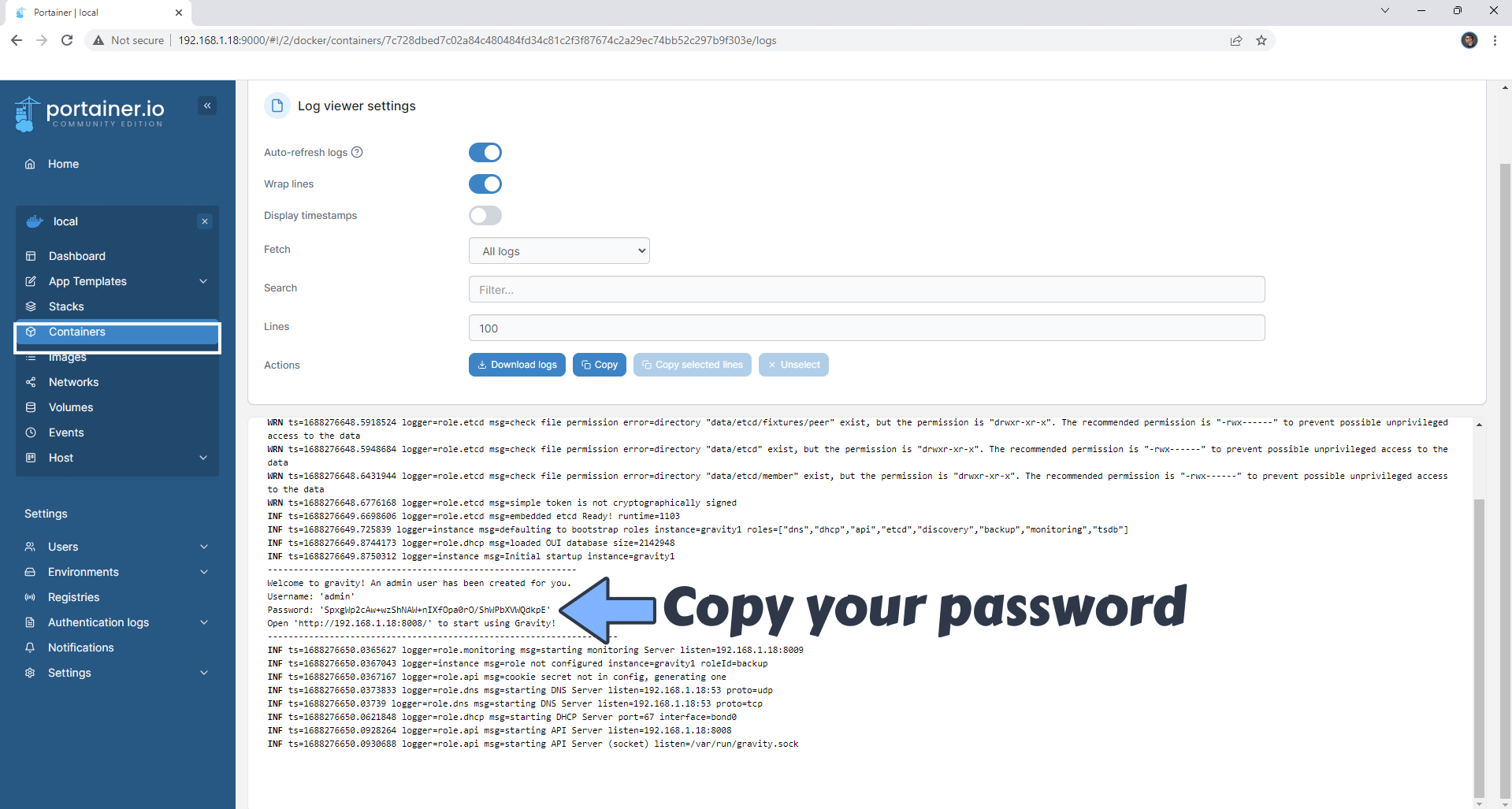
STEP 10
🟢Please Support My work by Making a Donation. Almost 99,9% of the people that install something using my guides forget to support my work, or just ignore STEP 1. I’ve been very honest about this aspect of my work since the beginning: I don’t run any ADS, I don’t require subscriptions, paid or otherwise, I don’t collect IPs, emails, and I don’t have any referral links from Amazon or other merchants. I also don’t have any POP-UPs or COOKIES. I have repeatedly been told over the years how much I have contributed to the community. It’s something I love doing and have been honest about my passion since the beginning. But I also Need The Community to Support me Back to be able to continue doing this work.
STEP 11
The installation process can take up to a few seconds/minutes. It will depend on your Internet speed connection. Now open your browser and type in http://Synology-ip-address:8008 Type in admin as username and your own Password that you have previously auto-generated at STEP 9. Click Log in. Follow the instructions in the image below.
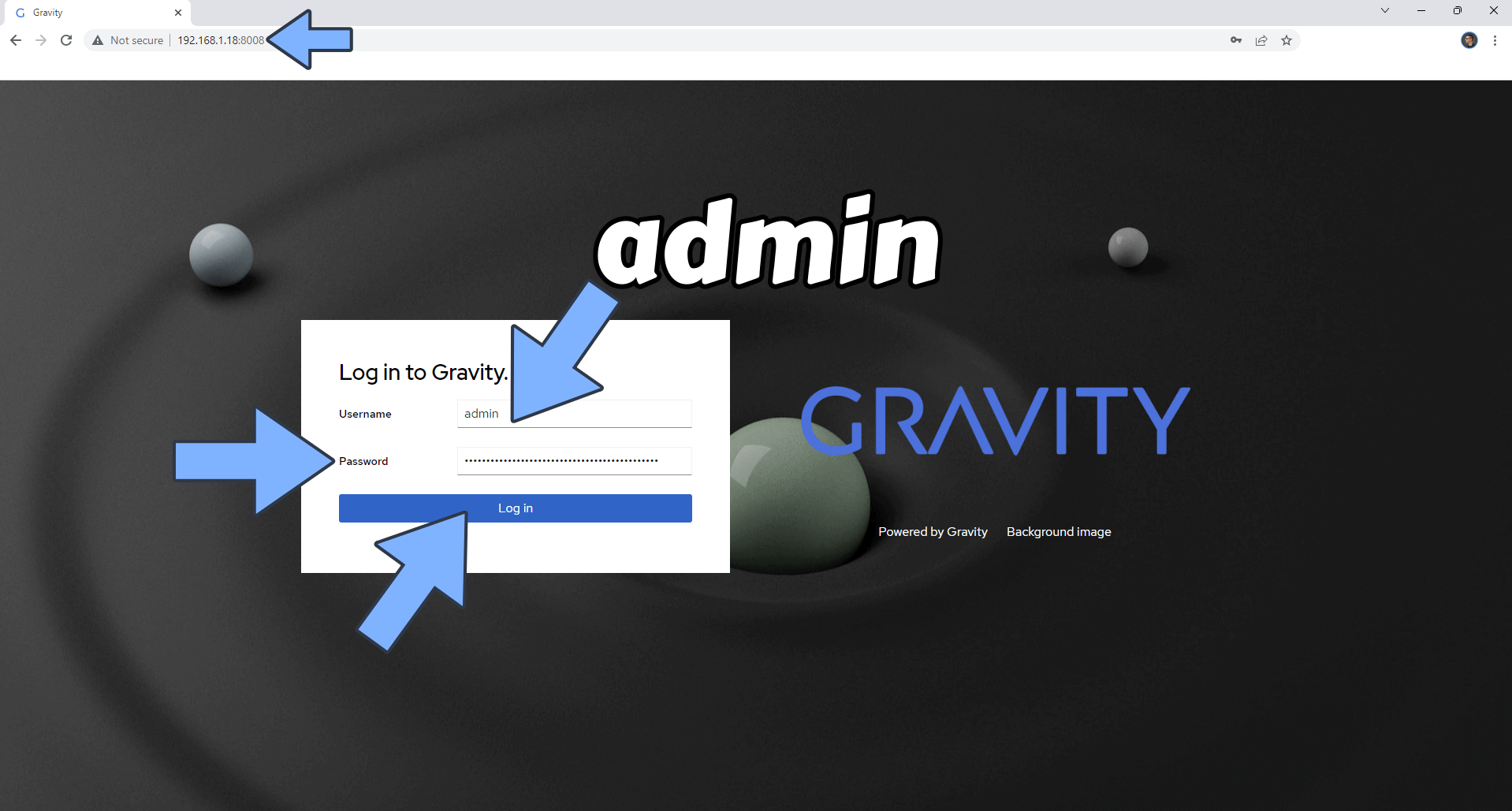
STEP 12
Click Subnets. Follow the instructions in the image below.
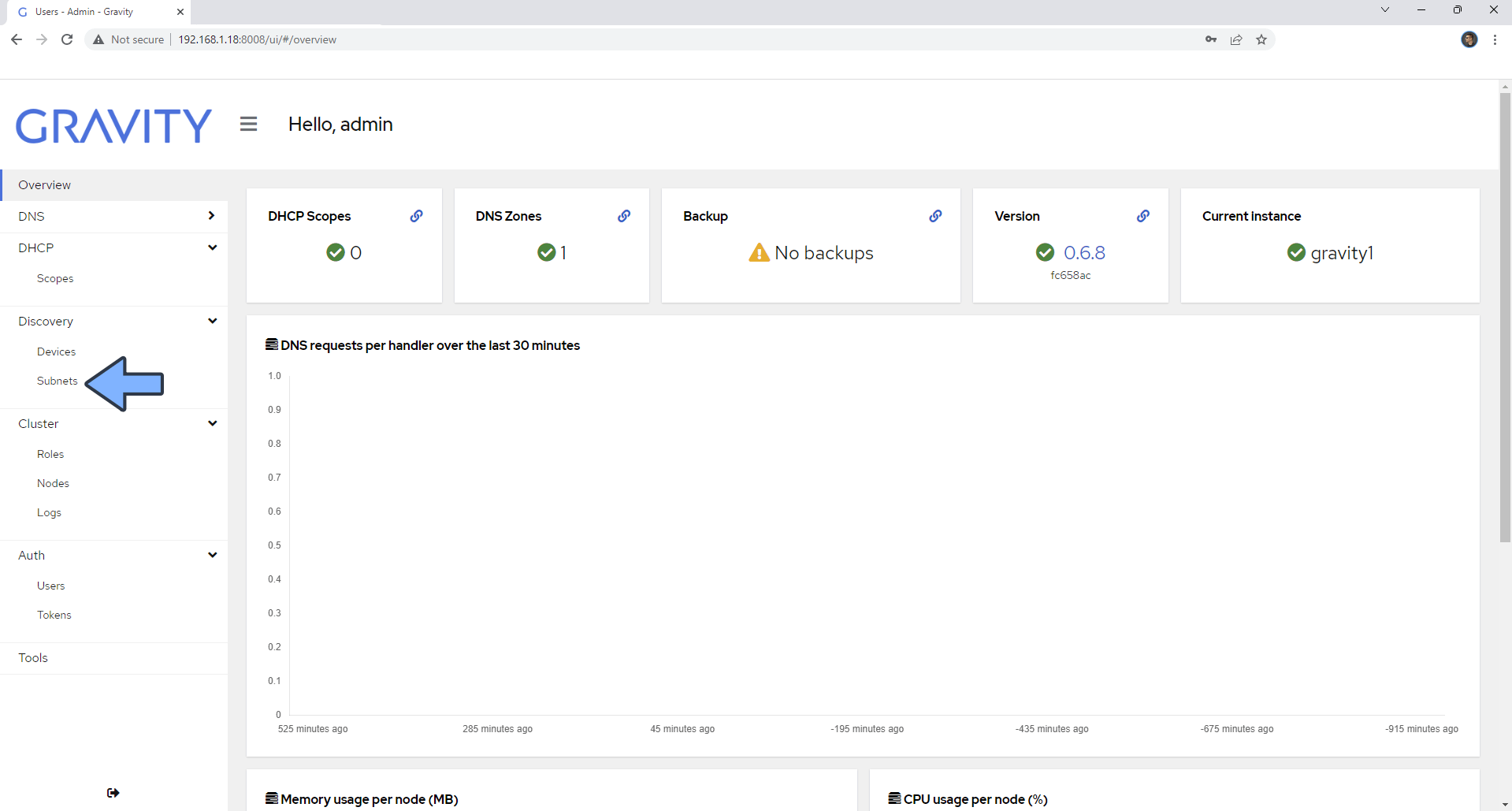
STEP 13
Select your default subnet then click the play icon to start scanning your subnet. Follow the instructions in the image below.
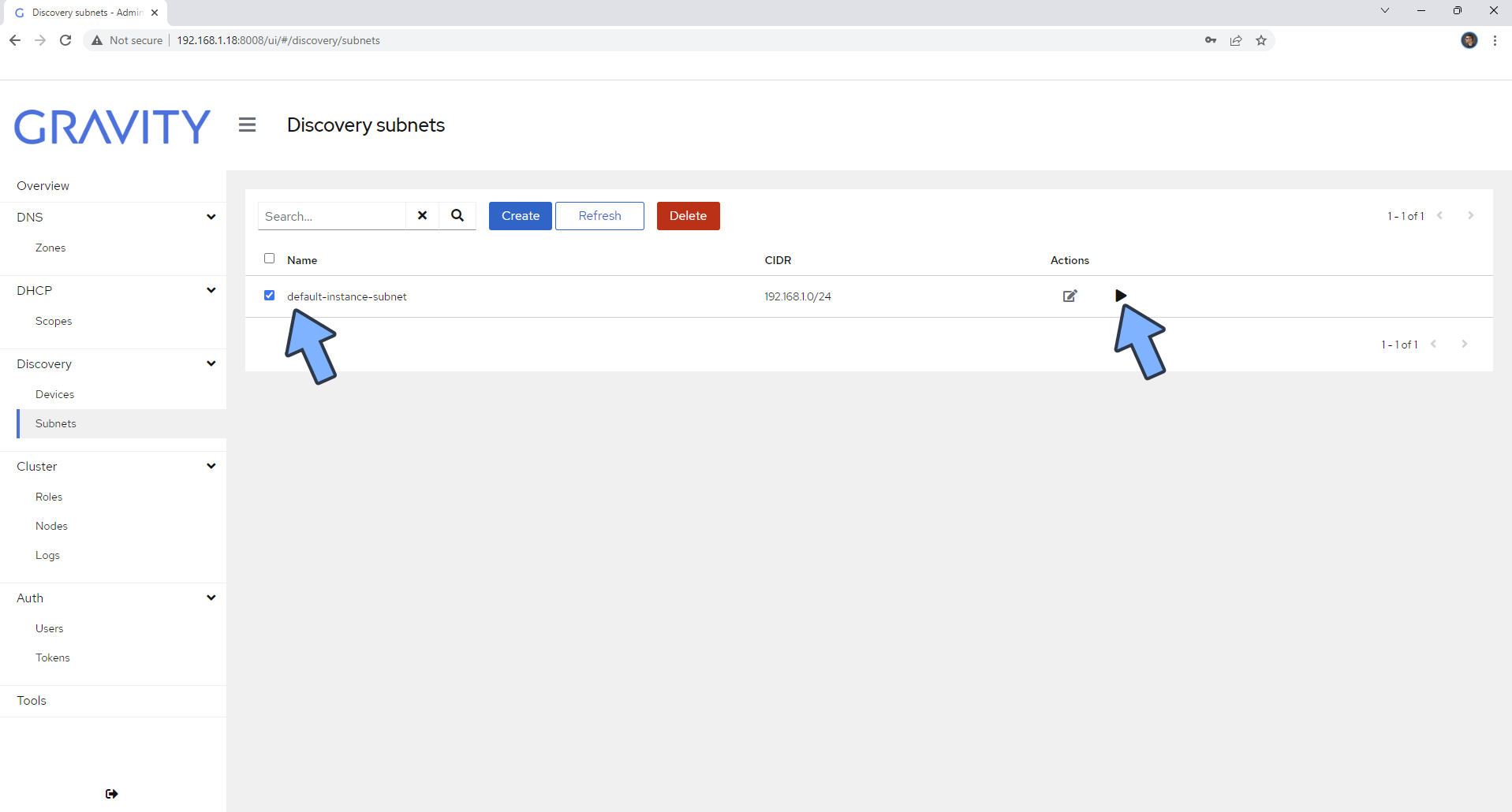
STEP 14
On the left sidebar click Devices. Follow the instructions in the image below!
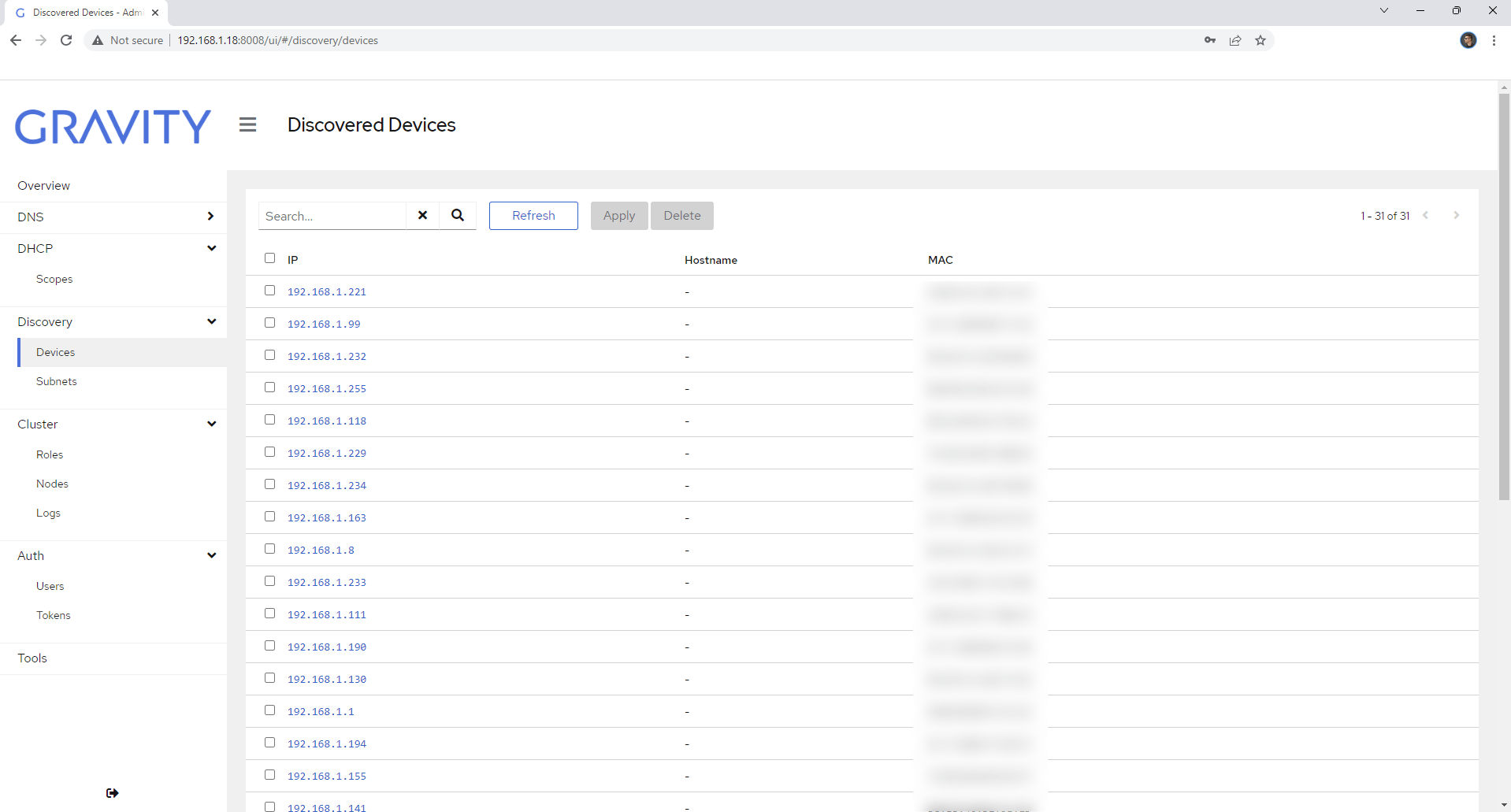
Enjoy Gravity!
If you encounter issues by using this container, make sure to check out the Common Docker issues article.
Note: If you want to run the Gravity container over HTTPS, check How to Run Docker Containers Over HTTPS. In order to make Gravity work over https, it’s also mandatory to set up WebSocket.
Note: Can I run Docker on my Synology NAS? See the supported models.
Note: How to Back Up Docker Containers on your Synology NAS.
Note: Find out how to update the Gravity container with the latest image.
Note: How to Free Disk Space on Your NAS if You Run Docker.
Note: How to Schedule Start & Stop For Docker Containers.
Note: How to Activate Email Notifications.
Note: How to Add Access Control Profile on Your NAS.
Note: How to Change Docker Containers Restart Policy.
Note: How to Use Docker Containers With VPN.
Note: Convert Docker Run Into Docker Compose.
Note: How to Clean Docker.
Note: How to Clean Docker Automatically.
Note: Best Practices When Using Docker and DDNS.
Note: Some Docker Containers Need WebSocket.
Note: Find out the Best NAS Models For Docker.
Note: Activate Gmail SMTP For Docker Containers.
This post was updated on Monday / April 14th, 2025 at 12:36 AM
